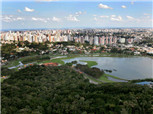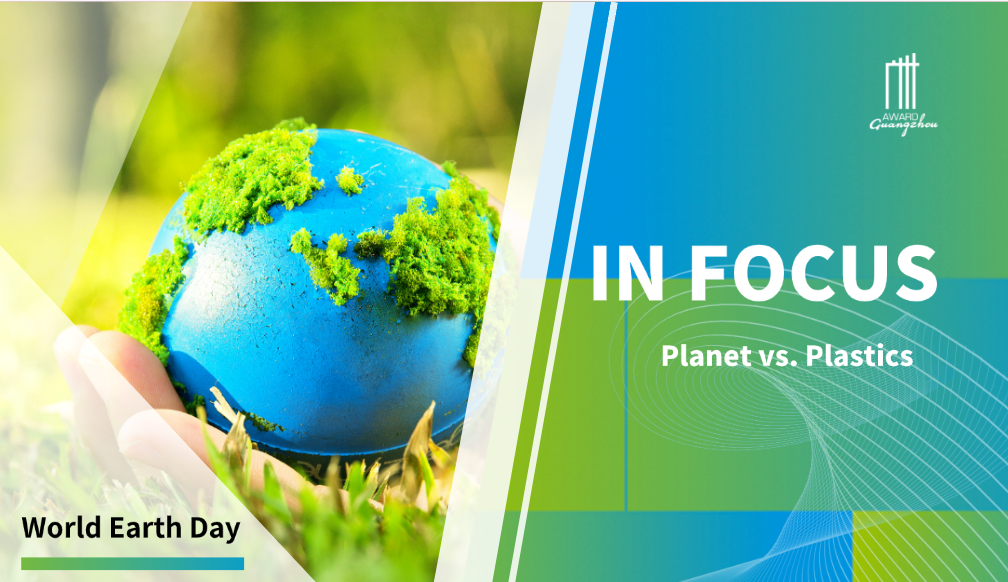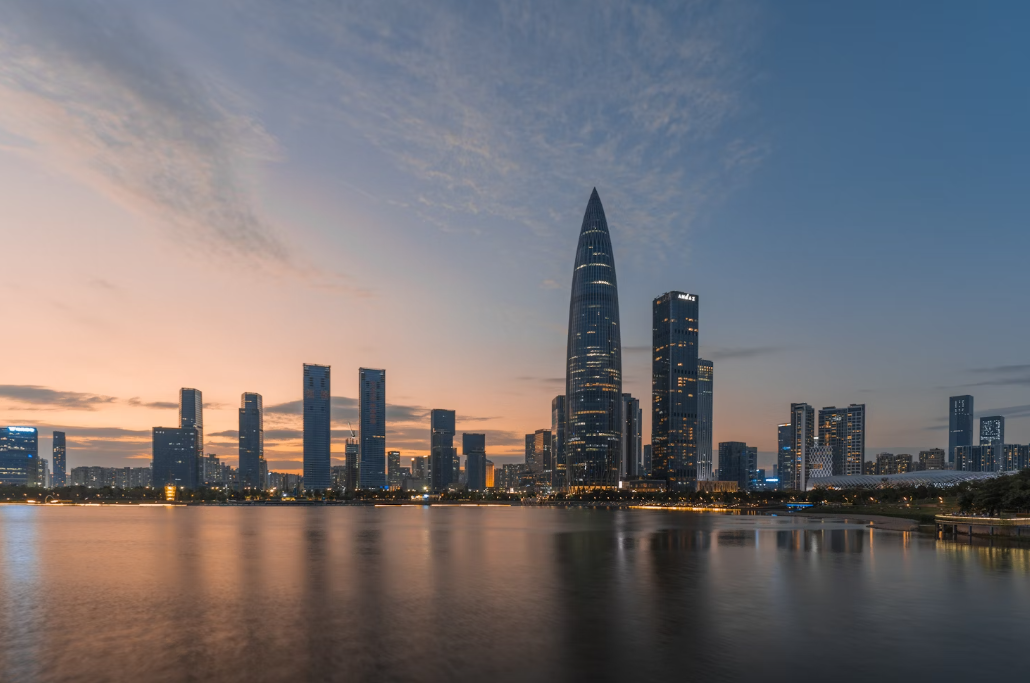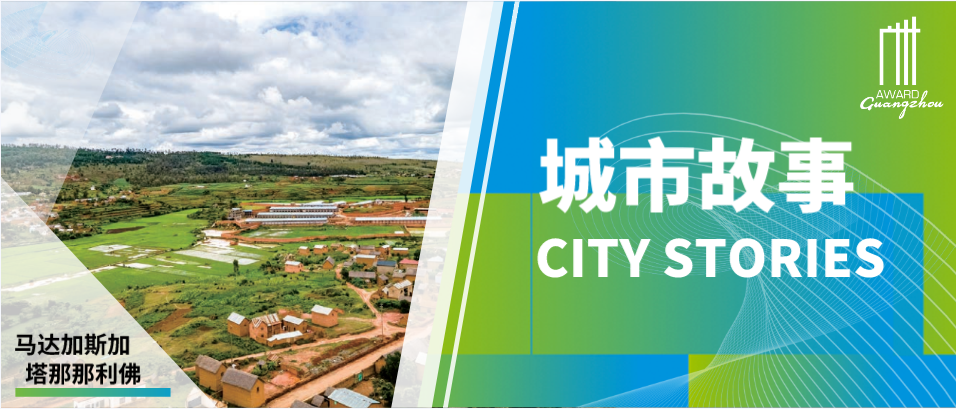Curitiba, Brazil
Linking Environmental Preservation to Urban Development: The Green Areas of Curitiba

Background Information
From 1960 to 1980, the government policy of rural mechanization and industrialization drove the population of Curitiba, capital of the state of Paraná, from 370,000 to one million. During the 1970s, the environmental agenda was still in its early stage and was far outweighed by the policy of “growth at any cost”, and Curitiba, along with many countries in the region, adhered to that policy.
Meeting the needs of a fast-expanding and growing city, without losing sight of its potential, was instrumental in establishing the green areas proposal, allowing the city to create protected areas (Conservation Units) to preserve and conserve of the city’s green spaces.
The initiative helped combine conservation green areas with water resources. Conservation Units fulfill several functions -- they protect biodiversity, prevent illegal occupations of the banks of rivers and streams, as well as provide recreational areas, sanitation and flood control.
However, the best partnership established was with the people who made the areas privileged spaces for leisure thanks to there being no access charge. This benefitted areas such as the City Zoo, which saw its visitor numbers grow from 2.2 million in 2005 to 3.7 million in 2012.
In the eighties, the city had 51 square meters of green area per inhabitant; this figure has increased to 64.5 square meters.
The city became known nationally and internationally as an Ecological Capital, a title conferred on it by the United Nations in recognition of its environmental policies in the 1990s.
For the policy to remain effective, partnerships were established with non-governmental organizations, the Foundation for Research of the Federal University of Paraná, the Open University of the Environment and HSBC Bank.
Goals of the Initiative
The results of the initiative can be seen in the increase in the creation of Conservation Units, the increment in the square meter of green area per inhabitant index, the increased carbon sequestration resulting from green areas and national and international recognition for the strategies adopted.
Curitiba today has 50 Conservation Units distributed as follows: 22 Municipal Parks, 16 Woods, a botanical garden, an Ecological Station, two Environmental Protection Areas and 11 Private Reserves of Natural Municipal Heritage.
In order to achieve this, Law 9804/2000 "Municipal System of Conservation Units" was enacted, which, among other things, allows the transfer of constructive potential, payment in kind or exchange of land in areas of interest to the city for the establishment of new protected areas and incorporation of areas adjacent to existing ones.
Despite the continued growth of the city, the green area preservation and conservation policy has enabled the preservation of forest remnants which today provide an index of 64.5 square meters of green area per inhabitant. This measurement is obtained from the city’s system of geographical information registration of the City Department of the Environment.
A pioneering partnership was signed in 2008 between the city of Curitiba and the Society for Wildlife Research and Environmental Education - SPVS to quantify the carbon dioxide absorbed during photosynthesis and accumulated in the form of carbon in native plant biomass.
In the urban environment of Brazil, there was no record of any other such surveys. The information obtained will serve as an input for nature conservation associated to the issue of climate change.
As a result we have:
•Increased carbon in native areas: 15 municipal Conservation Units sampled with a total of 42,854 metric tons of carbon, indicating an annual increase of 720 tons of carbon fixed only in these Conservation Units. Extrapolating the estimate to all forest regions of the county, these areas annually sequester 19,007 tons of carbon.
•Carbon stocks in urban tree cover: a total stock of 42,188 tons of carbon.
•Carbon stock in individual Araucaria pine specimens: The estimate resulted in 70,280 tons of carbon, which represented 5.9 percent of the current estimated amount for the forests of the municipality Conservation Units.
Innovation for the Initiative
The initiative can be considered evolutionary and, at the same time, revolutionary. The city innovated by considering the preservation and conservation of green areas as essential to the maintenance of Urban Biodiversity and, therefore, for the quality of life. It conciliated the adoption of a legislation that is stricter than the Federal or State ones, but encouraged the owners of areas of native vegetation to preserve them and keep them through financial gains by reducing taxes, increasing the number of floors built in areas where there is not foreseen and transfer of constructive potential to other areas. We can also consider the proposal as evolutionary as it is being enhanced continuously. One such example has been the eradication of invasive exotic species that is considered the second leading cause of loss of native plant and animal diversity. Curitiba enacted Decree 473 in 2008 defining the forest species considered invasive.
The project also carried out actions in environmental education through courses for city employees to drive their knowledge of our plants and plays to raise awareness about the issue. Educational work was also undertaken in the vicinity of protected areas where the replacement of invasive exotic tree species with native species was happening.
Approximately 20 percent of the city surface is covered by forest fragments, being protected by the Municipal Green Area System. Thus, society's participation in the preservation and conservation of these areas that are so important to maintaining the quality of life of our citizens is essential.
In addition to legislation for licensing and overseeing, the city of Curitiba was highly innovative with the creation of the Private Reserve of Natural Municipal Heritage - RPPNM, Conservation Units which allow owners to continue living on the property, keeping the area green, with the possibility of becoming a venue for activities in environmental education and scientific research, and also entitling them to transferring the property’s building potential constructive to other properties located in areas without environmental restrictions.
-
 In Focus | The World Earth Day: Planet vs. Plastics
In Focus | The World Earth Day: Planet vs. Plastics -
 Urban Innovation in China | Shenzhen: How to Maintain Momentum to Achieve Carbon Peak by 2030 While Leading Green and Low-Carbon Development?
Urban Innovation in China | Shenzhen: How to Maintain Momentum to Achieve Carbon Peak by 2030 While Leading Green and Low-Carbon Development? -
 City Stories | Antananarivo, Madagascar: Building Resilience in the City Food System
City Stories | Antananarivo, Madagascar: Building Resilience in the City Food System -
 In Focus | International Women’s Day: Building a Women-Friendly City
In Focus | International Women’s Day: Building a Women-Friendly City























 Tel: +86 20 3780 4434
Tel: +86 20 3780 4434 Email: info@guangzhouaward.org
Email: info@guangzhouaward.org Address: Rm 1609, FuLiXinTianDi, No.307 Guangzhou Dadao Zhong, Yuexiu District, Guangzhou, Guangdong, 501600, PRC
Address: Rm 1609, FuLiXinTianDi, No.307 Guangzhou Dadao Zhong, Yuexiu District, Guangzhou, Guangdong, 501600, PRC




